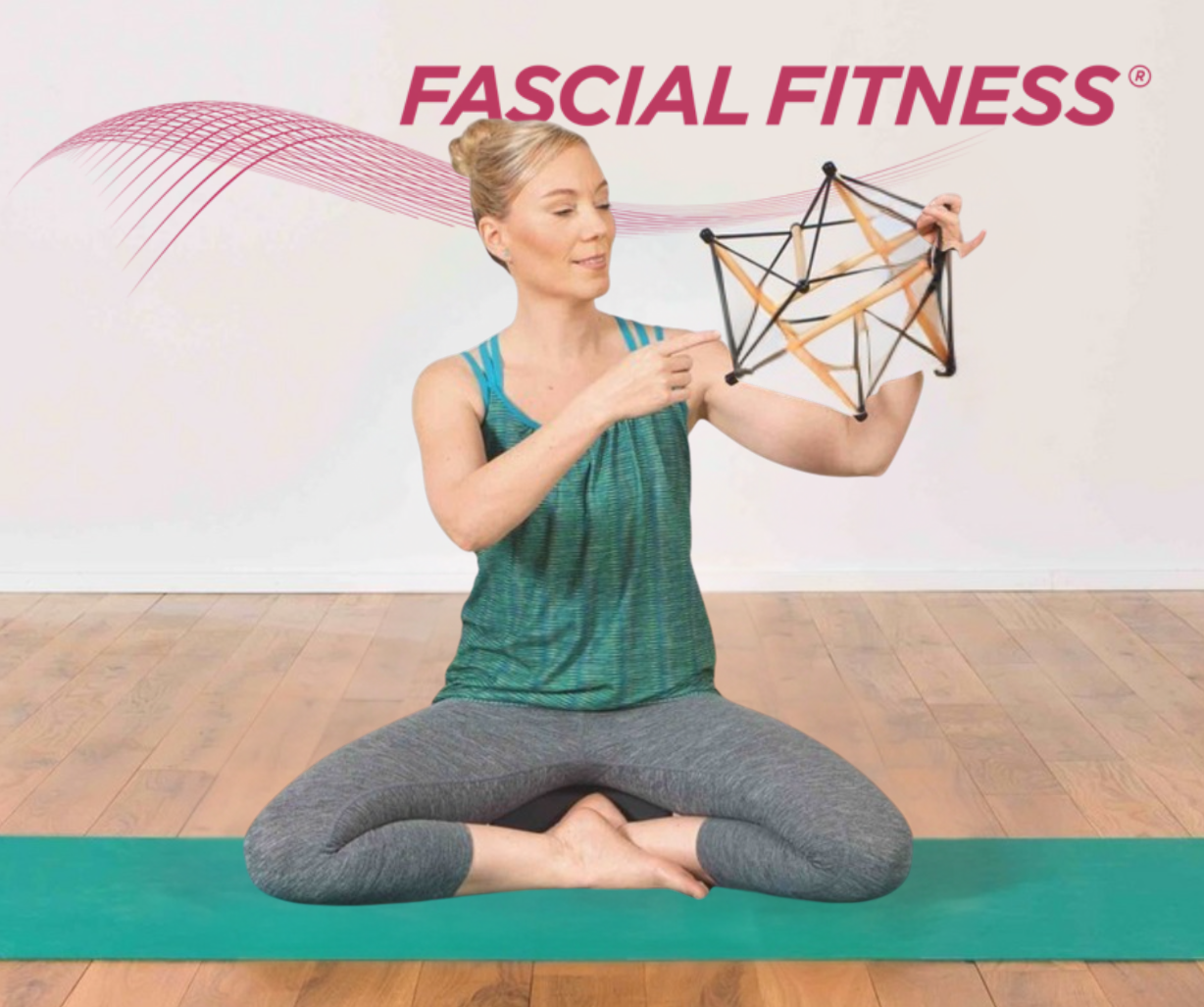Introduction to Davis’s Law
Simply put, according to Davis’s Law, fascial tissue continuously remodels itself. This remodeling is carried out by thousands of tiny fibroblast cells that produce triple-helix strands of collagen.
This law essentially means that the network of your body-wide fascia system is constantly remodeling itself based on your movements, loading patterns, diet, and lifestyle. It’s a process similar to how a plant grows and adapts.
The fibroblast cells, which are the builders of fascia, line up along the lines of stress – or ‘load paths’ – and produce the protein fibres of collagen, elastin, and reticulin. This biological process, where mechanical forces are converted into biochemical signals, is called mechanotransduction.
Davis’s Law of Tissue Healing
Davis’s Law highlights how connective tissues like fascia, as well as structures like tendons and ligaments, respond to the demands placed upon them. When connective tissue cells receive the right stimuli, their metabolism is boosted, and they produce new fibres that reconnect and rearrange. This adaptation, particularly the increase in solid collagen fibres stimulated by intense training, means stronger fascia is needed to support muscle growth. Studies have shown plasticity in structures like the Achilles tendon in response to strain.
Targeted and regular fascia training can slowly but sustainably change fascial tissue. This improves its elastic properties and ability to bounce back. The structure of fascia changes its length, strength, and lubricity to adapt to the daily stresses and strains. Fascia loves to be exercised and stretched, and it also responds well to having mechanical pressure and tension applied to it.
The Role of Fascia in the Musculoskeletal System
Fascia, more commonly known as connective tissue, is the soft tissue that runs through the entire body, surrounding our organs and giving us shape and structure. In 2007, at the first International Fascia Research Congress, the term ‘fascia’ was redefined to specifically include the fibrous connective tissue in the musculoskeletal system and the solid sheaths around organs, recognizing their common functions.
While the scientific phase of fascia research is new, it is marked by interdisciplinary perspectives and international collaboration. Research findings are being put into practice in sport, physiotherapy, medicine, and rehabilitation. The concept of an interdependent network of fascia in the human body is now widely accepted by orthopaedic surgeons and sports scientists.
Fascia gives us shape and structure. It’s now understood that it is primarily the fascia and muscles together that make up a dynamic network of tension that keeps the body upright, rather than the skeleton alone. One of the four basic functions of fascia is Shape: to encase, cushion, protect, and give structure.
Fascia and Soft Tissue Dynamics
Fascia is crucial for physical movements and plays a key role in the musculoskeletal system. It ensures the function and optimum coordination of our muscles. Muscles wouldn’t be able to function or keep their shape without their fascial sheaths. Fascia encases individual muscle fibres, surrounds fibre bundles, and forms the outermost muscle sheath. Tendons, part of the fascial structure, transfer energy from muscle to bone. The muscle tension is transferred through the fascia, which provides independent elements within this dynamic network. There is force transmission between synergistic skeletal muscles through connective tissue. Myofascial meridians play a special role in coordination and suppleness.
When fascia becomes matted, it restricts muscle function and energy transfer, making movements less fluid and increasing stiffness. Healthy fascia improves mobility and makes movements more fluid and elegant. Fascia is considered one of our most important sensory organs. The connective tissue even sends signals to the brain, and body movements are determined by sensors in fascia. Proprioception, the sense of the relative position of one’s own parts of the body and strength of effort being employed in movement, is influenced by this system.
Davis’s Law in Fitness and Rehabilitation
Physiotherapy is a field significantly impacted by new fascia research. Manual therapy methods used by physiotherapists stimulate fascia and can release tension and adhesions. Practices like stretching in yoga may be beneficial for conditions like back pain by stimulating fascia. Physiotherapists are often fascia specialists.
Lack of exercise leads to fascia becoming matted. Matted fascia restricts function and causes stiffness. Davis’s Law implies that variable movements are crucial to prevent fascia from hardening into dense adhesions. Techniques like rolling out fascia with foam rollers apply pressure, which encourages fluid exchange and helps release tension and adhesions. Targeted, regular training helps change tissue and improve its properties.
As per Davis’s Law, fascial tissue remodels based on load and movement patterns. Targeted training provides the necessary stimuli for connective tissue cells to produce new fibres and rearrange, changing the structure of fascia to adapt to stresses. This remodeling and adaptation leads to improvements in elasticity and tensile strength, resulting in more fluid and dynamic movement patterns.
In sports, fascia is involved in muscle soreness, and its condition helps prevent injuries. Many sports injuries are fascial, not just muscle problems. Understanding how fascia stores and transfers energy (elastic recoil) is impacting training. Overuse injuries and imbalances can be linked to one-sided or irregular strain causing micro-injuries in fascia. Training concepts based on fascia research aim to improve athletic performance and injury resilience. Applying the principle of variable movement and loading, derived from understanding fascia’s remodeling under stress (Davis’s Law), is key to sport-specific fascial care and managing these issues.
Fascia training doesn’t replace previous programs but complements and enriches them. Many conventional programs move fascia, but targeted stimulation is needed for optimum regeneration and energy. Integrating fascia exercises into existing routines can improve overall results.
Biomechanics and the Central Nervous System
The body is a dynamic network of tension involving fascia and muscles, which relies on constant adjustments in muscle tension and automatic balancing controlled by the nervous system. Fascia is a sensory organ that transmits signals to the brain, influencing body movements and coordination. The condition and composition of the extracellular matrix can affect fascia stiffness. These biomechanical properties and their neural control are vital for musculoskeletal health.
Healthy fascia is crucial for musculoskeletal health, protecting muscles from injury, maintaining body shape, and providing long-term protection against pain and injury. Lack of variable movement can lead to matted fascia and stiffness, potentially contributing to poor posture. Regular, targeted training with diverse stimuli is needed to maintain the healthy, elastic properties of fascia.
Conclusion
Davis’s Law is a cornerstone concept explaining how our fascial tissue is dynamic and constantly remodeling based on the movements, loads, diet, and lifestyle we experience. Understanding this adaptation principle highlights the critical role of fascia as a structural component, a key player in movement dynamics alongside muscles, and a vital sensory organ. Applying the principles derived from Davis’s Law in fitness and rehabilitation—particularly through varied movement, targeted pressure, and sufficient hydration and nutrition—is essential for maintaining healthy, elastic, and resilient fascia, which in turn helps prevent pain and injury and improves overall performance and well-being.
The scientific investigation into fascia is still expanding. Research groups are planning studies to examine the effectiveness of specific fascial exercises for sport and back pain. The goal is to continue translating new findings about fascia’s adaptation and function into practical applications for athletic performance and injury resilience programs.

Unlock your full potential as a movement professional
Become a Certified Fascial Fitness Trainer
Join our 10-week virtual mentorship program, featuring live calls with fascia research pioneers—including Dr. Robert Schleip himself. Deepen your understanding of fascia-focused training, gain exclusive insights from leading experts, and get hands-on guidance to confidently integrate this cutting-edge approach into your practice.


